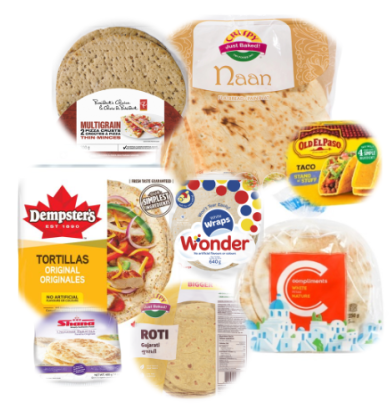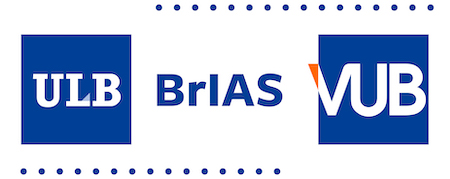Flatbreads: History, innovation, and sustainability.
Program:
10.00 – 10.10 Welcome & Introduction to BrIAS
Frits Heinrich - Vrije Universiteit Brussel / BrIAS Program Director
10.10 – 10.20 Presentation of FLAT BREAD MINE project
Patricia Le-Bail1,2 - 1UR1268, Biopolymères, Interactions, Assemblages, INRAE, F-44300 Nantes France; 2USC 1498 INRAE-TRANSFORM Department and GEPEA UMR CNRS 6144.
10.20 – 10.40 The heritage of Italian flatbread: From tradition to nutrition
Antonella Pasqualone - University of Bari, Italy
10.40 – 11.00 A dive into the Greek artisanal and industrial flatbreads
Chris Deligeorgakis - International Hellenic University, Department of Food Science & Technology, Laboratory of Cereal Chemistry and Technology, Thessaloniki, Greece
11.00 – 11.20 Cultural and nutritional features of an essential Somali flatbread
Erin Wolgamuth1 & Antonella Pasqualone2 - 1Independent researcher; 2University of Bari, Italy
11.20 – 11.40 Mullat al smeed: Reviving a traditional Lebanese flatbread
Sabine Yassine & Cynthia Helou - Department of Nutrition, Faculty of Pharmacy, Saint Joseph University of Beirut, Beirut, Lebanon
11.40 – 12.00 Innovation in baking science
Alain Le-Bail1,2, Patricia Le-Bail1,3, Olivier Rouaud1,2, Eve-Anne Norwood1,2, Bianca Chieregato Maniglia4, Tiago Carregari Polachini4, Juliette Palier,1,2,3, Doina Crucean2,3, Eugenia Asamoah1,2,3, Mamadou Lamine Niame1,2,3, Alejandra Velasquez1,2,3, Luc Saunier1,3 1USC 1498 INRAE-TRANSFORM Department and GEPEA UMR CNRS 6144; 2 Oniris, UMR 6144 GEPEA CNRS, Nantes, F-44307, France; 3UR1268, Biopolymères, Interactions, Assemblages, INRAE, F-44300 Nantes France; 4 USP-FFCLRP, Ribeirão Preto, SP Brazil
12.00 – 14.00 Lunch break
14.00 – 14.20 Challenges of rapid baking in the case of flat breads and non-conventional baking
Patricia Le-Bail1,3, Alain Le-Bail1,2, Eve-Anne Norwood1,2, Clara Leguet1,2,3, Alejandra Velasquez1,2,3, Luc Saunier1,3 - 1USC 1498 INRAE-TRANSFORM Department and GEPEA UMR CNRS 6144; 2 Oniris, UMR 6144 GEPEA CNRS, Nantes, F-44307, France; 3UR1268, Biopolymères, Interactions, Assemblages, INRAE, F-44300 Nantes France.
14.20 –14.40 Application of bran and sourdough-like fermentation in flat bread
Tomislava Grgić, Bojana Voučko, Nikolina Čukelj Mustač, Dubravka Novotni - University of Zagreb, Faculty of Food Technology and Biotechnology, Zagreb, Croatia
14.40 – 15.00 Durum and freekeh flours in flatbreads: Impacts of partial substitution
Christelle El Tomb1,2, Rita-Maria El Rahi1, Céline Chucri1, Salim Makhoul2, Joseph Matta1,3, Cynthia Helou1
1Department of Nutrition, Faculty of Pharmacy, Saint Joseph University of Beirut, Beirut, Lebanon; 2Crown Flour Mills (CFM), Beirut, Lebanon; 3Industrial Research Institute (IRI), Beirut, Lebanon
15.00 – 15.20 Flatbreads: Are they meeting current trends of sustainability, nutrition and health?
Cristina M. Rosell1,2 *, Nicola Gasparre2, Raquel Garzon2 - 1Institute of Agrochemistry and Food Technology (IATA-CSIC), Paterna, Spain; 2Department of Food and Human Nutritional Sciences, University of Manitoba, Winnipeg (Canada)
15.20 – 16.30 Final discussion
Abstracts:
The heritage of Italian flatbread: From tradition to nutrition
Antonella Pasqualone - University of Bari, Italy
The technical and cultural features of Italian flatbreads are reviewed. These popular baked goods, adaptable to diverse types of flour, are easily baked and, in some cases, dried to extend shelf life. Convenient street foods, can be transported with little encumbrance, reducing carbon footprint. In one word, these breads are sustainable. The Italian “flatbread-scape” shows a high degree of diversity, including plain, garnished, and fried flatbreads, all having a marked identarian value and traditional character. Food is “typical” when conveys the identity of a place. This concept is particularly popular in Italy, where is considered a synonym of “good” and typicality schemes apply to 75 flatbreads. These breads are also suitable recipients for innovation. The results of experimental trials to improve the nutritional value of traditional Italian flatbreads will be reported.
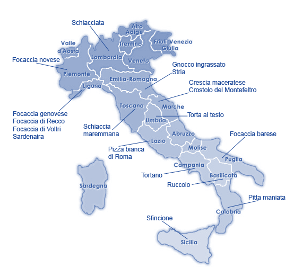
Regional variants of focaccia in Italy. From: Pasqualone, A., Delcuratolo, D., & Gomes, T. (2011). Focaccia Italian flat fatty bread. In: Flour and breads and their fortification in health and disease prevention (pp. 47-58). Academic Press.
A dive into the Greek artisanal and industrial flatbreads
Chris Deligeorgakis - International Hellenic University, Department of Food Science & Technology, Laboratory of Cereal Chemistry and Technology, Thessaloniki, Greece
Flatbreads are the most popular breads throughout the world. Produced from flattened dough flatbreads are frequently consumed in the Mediterranean basin. In Greece, one finds a plethora of such breads prepared at home for family consumption while some of these breads are produced at an industrial setting. The most commercialized product flatbread in Greek is Pita bread (as known as soulvakopita). While current consumers’ demand for a clean label leads toward products that satisfy their individual needs, FBs are far behind in this challenge. This work exhibits the variety of the Greek flatbreads while focusing in the evaluation of the commercial Pita breads sold at ambient temperature or frozen towards their composition and nutritional profile.
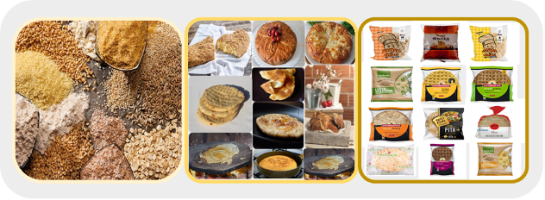
Cultural and nutritional features of an essential Somali flatbread
Erin Wolgamuth1 & Antonella Pasqualone2 - 1Independent researcher; 2University of Bari, Italy
An in-field study was carried out in six cities in Somalia, Somaliland, and Ethiopia’s Somali State to document the formulation, production methods, and consumption patterns of a Somali flatbread with strong cultural association but very little research. The bread is known as canjeero in southern and eastern regions and laxoox in northern and western regions. The results of the study show that laxoox/canjeero production features four styles, which have been denominated as “heritage,” “new heritage,” “innovative,” and “global”. Heritage production is linked to the historic era of pastoralism, while the other three styles originated in Somali civil conflict and continue today. The results of a first nutritional characterization of this flatbread are also reported.
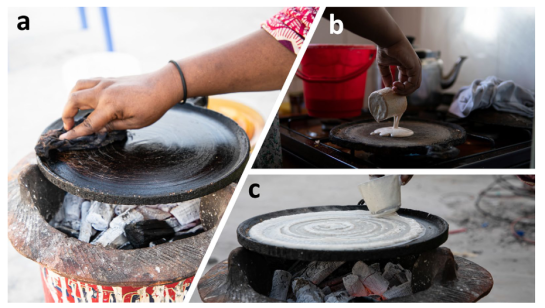
Shaping and baking laxoox/canjeero. From: Wolgamuth, E., Yusuf, S., Hussein, A. & Pasqualone, A. (2022). A survey of laxoox/canjeero, a traditional Somali flatbread: Production styles. Journal of Ethnic Foods, 9: 22. https://doi.org/10.1186/s42779-022-00138-3
Mullat al smeed: Reviving a traditional Lebanese flatbread
Sabine Yassine & Cynthia Helou - Department of Nutrition, Faculty of Pharmacy, Saint Joseph University of Beirut, Beirut, Lebanon
“Mullat al smeed” is a dry flatbread made using parboiled cracked wheat also known as borghol or smeed. The long shelf life from low water content combined with the stackable flat shape made it the perfect companion for pilgrims during their long travels. But with the shortening of travel times and the rising availability of more convenient flours for breadmaking, mullat al smeed began to disappear. The first aim of this work is to assess the familiarity of the local community with this flatbread through a nationwide survey. The second aim is to gather more information on the traditional production of this flatbread and its characteristics in order to preserve this knowledge and improve the process.
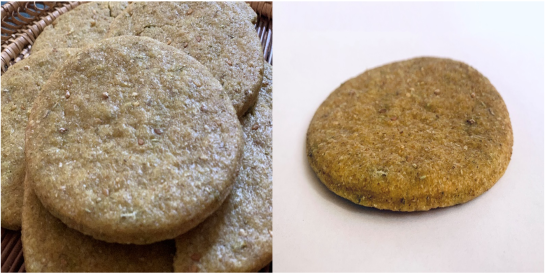
Mullat al smeed Lebanese bread.
Innovation in baking science
Alain Le-Bail1,2, Patricia Le-Bail1,3, Olivier Rouaud1,2, Eve-Anne Norwood1,2, Bianca Chieregato Maniglia4, Tiago Carregari Polachini4, Juliette Palier,1,2,3, Doina Crucean2,3, Eugenia Asamoah1,2,3, Mamadou Lamine Niame1,2,3, Alejandra Velasquez1,2,3, Luc Saunier2,3 1USC 1498 INRAE-TRANSFORM Department and GEPEA UMR CNRS 6144 2 Oniris, UMR 6144 GEPEA CNRS, Nantes, F-44307, France 3UR1268, Biopolymères, Interactions, Assemblages, INRAE, F-44300 Nantes France 4 USP-FFCLRP, Ribeirão Preto, SP Brazil
Baking is among the oldest food process, but is still attracting innovation. This presentation proposes an overview on recent development done in joined projects between ONIRIS-GEPEA and INRAE-BIA. Most of the innovations that will be presented are process driven, with objective of developing new structures or to supress additives and technical aids (i.e. enzymes) in baking. Bullet points: suppression of baking powder by mixing under pressure, targeted thermal treatments relevant to develop functional flours for baking and 3D printing, salt reduction by 50% while enhancing the texture of bread with choline chloride, functional malted flours as substitutes to conventional baking enzymes, ohmic baking as a low energy baking process.
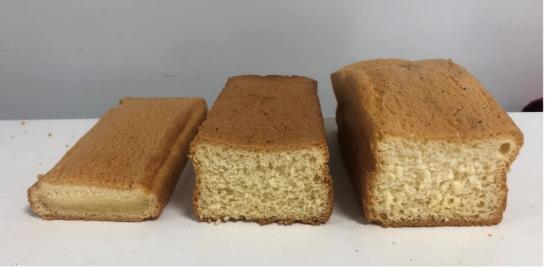
Sponge cake. Left: no emulsifiers; Centre: heat treated flour 10% substitution; Right: With emulsifier.
Challenges of rapid baking in the case of flat breads and non-conventional baking
Patricia Le-Bail1,3, Alain Le-Bail1,2, Eve-Anne Norwood1,2, Clara Leguet1,2,3, Alejandra Velasquez1,2, Luc Saunier1,3 1USC 1498 INRAE-TRANSFORM Department and GEPEA UMR CNRS 6144 2 Oniris, UMR 6144 GEPEA CNRS, Nantes, F-44307, France 3UR1268, Biopolymères, Interactions, Assemblages, INRAE, F-44300 Nantes France
The phenomena of swelling and destructuring of the starch granules that occur during conventional baking are strongly modified in the case of ultra-rapid baking like flat breads. As part of the European Flat Bread Mine project, we are studying in detail the impact of the heating rate on the wheat starch gelatinization process. Rapid baking modifies the conventional gelatinization process (swelling/dispersion), resulting in a sudden starch granule disruption / explosion resulting from a pressure rise within the internal zones of the granules. Recent investigations showed that a rapid baking yields a more pronounced leaching of amylose via radial channels of starch granules leading to a stronger amylose gel on the one hand, and on the other hand, to the partial dismantling of the branches of amylopectin into dextrins. The short chains dextrins appeared to form dextrins (from amylopectin)-lipid complexes. These phenomena have a strong effect on the texture, hardness and staling of flatbreads.
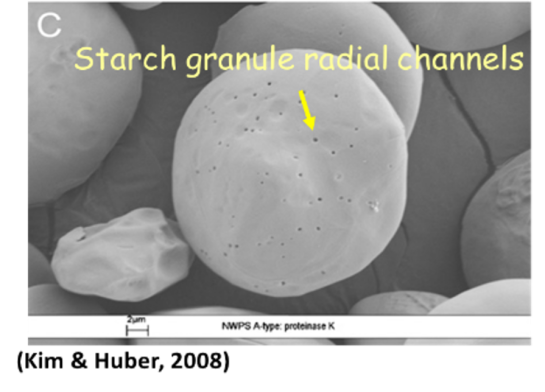
Application of bran and sourdough-like fermentation in flat bread
Tomislava Grgić, Bojana Voučko, Nikolina Čukelj Mustač, Dubravka Novotni - University of Zagreb, Faculty of Food Technology and Biotechnology, Zagreb, Croatia
Mediterranean consumers prefer traditional bread, often made with sourdough. The objective of this study was to investigate the physical and sensory characteristics of gluten-containing and gluten-free flat breads containing bran and sourdough. Native and ultrasonically pre-treated oat and barley bran were fermented with Lesaffre Livendo® LV4 starter at 30°C to a pH of ~4 and substituted 10% of wheat flour, whereas the mixture of millet bran (52.5%), millet flour (21.7%) and carob flour (25.8%) was fermented with Limosilactobacillus fermentum and Kluyveromyces marxianus for 16h at 35°C and used at the same substitution level in the gluten-free bread. The use of bran enriches the fibre and mineral content, while the sourdough ensures the desired technological quality and sensory liking of the flat bread. Their complementary action could extend the shelf-life of bread and contribute to the sustainability of the cereal supply chain.
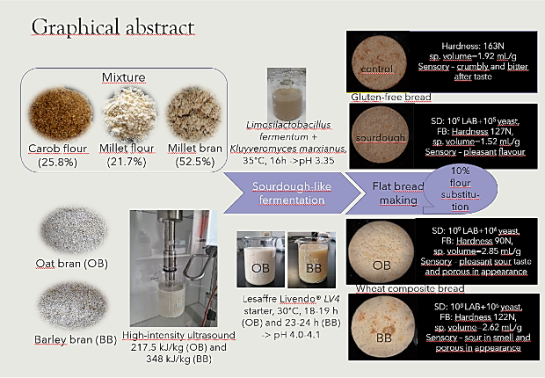
Durum and freekeh flours in flatbreads: Impacts of partial substitution
Christelle El Tomb1,2, Rita-Maria El Rahi1, Céline Chucri1, Salim Makhoul2, Joseph Matta1,3, Cynthia Helou1
1Department of Nutrition, Faculty of Pharmacy, Saint Joseph University of Beirut, Beirut, Lebanon 2Crown Flour Mills (CFM), Beirut, Lebanon 3Industrial Research Institute (IRI), Beirut, Lebanon
Aiming to improve the nutritional profile of Lebanese flatbreads using locally sourced ingredients, this study assesses the supplementation of wheat flatbreads with durum or freekeh (charred immature green wheat). Therefore, both flours were added at a 30% substitution rate in a double layered flatbread. Results showed that freekeh recipes had the highest water absorption (72%) and ash content (1.77%) but the lowest overall sensory evaluation acceptability. Whereas dough energy, extensibility and elasticity as well as colorimetric measures and sensory evaluation results showed that durum flatbreads were closer to the control. Thus, further optimizations of the recipes are required to achieve advanced rheological and sensory properties.
Flatbreads: Are they meeting current trends of sustainability, nutrition and health?
Cristina M. Rosell1,2 *, Nicola Gasparre2, Raquel Garzon2 1Institute of Agrochemistry and Food Technology (IATA-CSIC), Paterna Spain. 2Department of Food and Human Nutritional Sciences, University of Manitoba, Winnipeg (Canada) *cristina.rosell@umanitoba.ca
Flatbreads, often regarded as the precursor to contemporary bread, are appearing more frequently on customers' tables all around the world. Flatbreads usually responded to very simple recipes that could differ in the breadmaking process. But how are they being adapted to meet current global trends? A study of the marketed flatbreads in different European countries and in Canada was conducted to answer that question. Results revealed that marketed flatbreads respond to very complex recipes, but that greatly dependent on the country and also the type of flatbreads. Gluten free flatbreads offer is more limited. Although there are innovative flours and ingredients that are being used for these breads, the use of raw materials with more intriguing nutritional profiles may be a good course of action.
